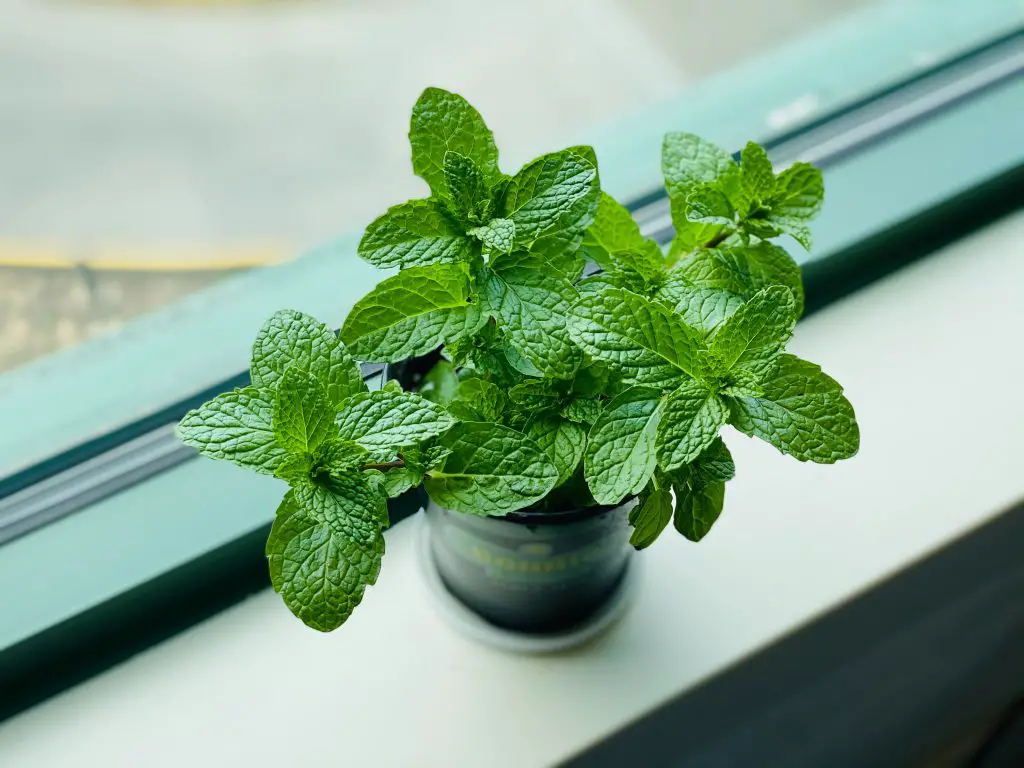Mint vs Spearmint: What Is The Difference? Mint and Spearmint are common flavors you can come across in candy. These flavors of course are based on plants that can be grown and eaten. So are these different names for the same plant or is there really a difference?
Mint is the general term to describe the plants that fall into the Metha genus whereas Spearmint is a specific species within that genus, Mentha spicata. However, Spearmint, which is also referred to as garden mint and common mint, is the variety that most people think of first whenever mint is mentioned, as much of the general public use the terms Mint and Spearmint interchangeably to describe the same plant.
Spearmint is native to Europe and Asia and appears in locations from Ireland to China. The plant generally prefers relatively wet environments with moist soils. The plant spreads relatively easily in these environments and can be considered invasive in certain circumstances.
As the plant has a relatively thick root system the plant tends to outcompete other plants and will take over an area. To limit this effect many gardeners tend to place the plant in pots or in locations that have natural physical barriers. I personally place my mint plant between a bluestone border and the chicken run which keeps the plants under control.
However, despite these drawbacks, this plant is really good as a ground cover in shady moist locations. The common mints typically reach a height of 12 inches (30 cm).

Are There Different Types Of Mint?
Within the metha genus there are between 13 and 24 species of the plant according to Wikipedia. The reason that the number is not precise is that the genus consists of many naturally hybridized varieties that overlap each other.
Of these plants there are a couple that are most common, common mint and peppermint which is a cross (Mentha × piperita). The plant was first described by Carl Linnaeus, who developed the Taxonomical classification system which we still use today. However, while Linnaeus first described the plant he certainly didn’t discover it.
Peppermint has been cultivated for at least 3500 to 4000 years and has been used for medicinal and cooking purposes. It is thought to have originated in the Mediterranean region and was known to be a highly valued herb in Ancient Egypt.
Other common variety is apple mint which is a separate species, Mentha suaveolens. This variety has a similar appearance to common mint except that it has lighter green leaves with a fuzzy surface created by fine hairs. The leaves are also more round but it still has a distinctive mint smell.
How To Grow And Propagate Plants From The Mint Family
Plants from the mint family are generally easy to grow either from seed of they can be propagated by division or a cutting. To grow the plants from seeds it is best to start out planting the seeds in early spring. The seeds can be sown directly into the garden however I recommend growing seeds in trays initially.
The reason for this is that it allows the seeds to be started earlier in the season as environmental conditions can be controlled easily by bringing the seed trays indoors. Ideally, the seed trays need to be kept in a warm location that has access to direct sunlight. However, if you live in a relatively cold climate it is worth considering purchasing a heat propagation tray.
Heated propagation trays will ensure that the seedling grows at the ideal temperature which will maximize the rate of growth. The one we recommend is the iPower Heating Seed Starter Germination Kit, shown in the picture below largely because it has a vented humidity dome and is relatively inexpensive. Click on the link to see the current price on Amazon.

When planting the seeds in the tray it is best to use a seed-raising mixture that is light and fluffy with good water retention. The seeds should be planted at a depth of 0.5 inches (1 cm). Seedlings will typically take 7 to 14 days to emerge and they will typically need to spend 6 weeks in the seed tray before the plants need to be potted on or planted out into the garden.
My personal preference is to repot the plants into a 6-inch pot to allow them additional time to become established before placing them into the garden. When the plants are large enough to be planted into the garden the location of the new plant should be selected carefully to ensure that the plant is restrained to avoid having the mint take over your garden.
A couple of possible options is to leave the plant in the pot and bury it in the garden, which will restrain the plant somewhat, or select a small garden bed that is restrained by structures such as concrete paths. The other option is to simply leave the plant in a pot, it is common for gardeners to leave pots of mint sitting under taps.
In terms of growing conditions mints are generally tolerant of a wide range of light conditions from full sun to full shade, however, I have found that the leaf quality of the plant is better in shadier locations. Additionally, to get the best out of the plant it is important to ensure that the soil is moist, rich, and contains plenty of nutrients.
Once the plant is established there is generally very little maintenance required other than watering the plant and ensuring that it does not take over your garden. At the end of the growing season, it is worth giving it a quick haircut, just to tidy it up for next season.

How To Propagate Mint
There are two main ways that mint can be propagated, by dividing the plant or growing the plant from cuttings. To propagate by division is straightforward.
Start by selecting a plant that reached at least 6 inches wide as this will ensure that there is a well-developed root system. Select a section that is at least 2 or 3 inches wide and remove it by slicing through the clump using a spade. As the plant is really tough you don’t have to be too careful about how you do it, as long as there is some root intact.
Once the new plant is placed in its new location it will only take a matter of weeks before it is producing substantial amounts of fresh new foliage.
The second method, which takes much longer is to take cuttings. To increase your chances of success with this method it is advisable to take cuttings in the morning when the leaves have their highest moisture content. When taking cuttings select stems with healthy-looking leaves that do not have a flower spike. The cuttings should ideally be 4 to 6 inches in length.
Strip the lower leaves off the stem leaving only one or two leaves on the cutting and then trim the base of the cutting at a 45-degree angle to maximize the surface area. The cutting can then be placed in soil, to increase the chances of the cutting striking it is advisable to use a rooting hormone, to read more about the effectiveness of the hormones click here.
If the cutting is successful it will begin to signs of growth after a few weeks however, it is important to note that cuttings will usually take 2 to 3 months to establish a decent root system. Once this occurs the volume of leaves will start to increase significantly.
I generally wait until this stage before I considered planting the cutting out into the garden, as disturbing the roots earlier than this will often set the plant back in its development.
